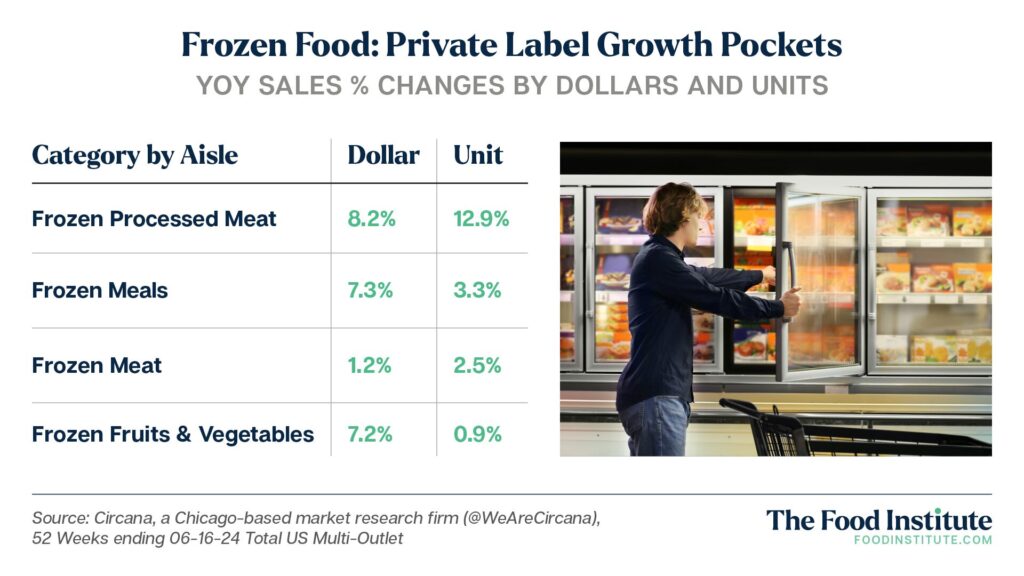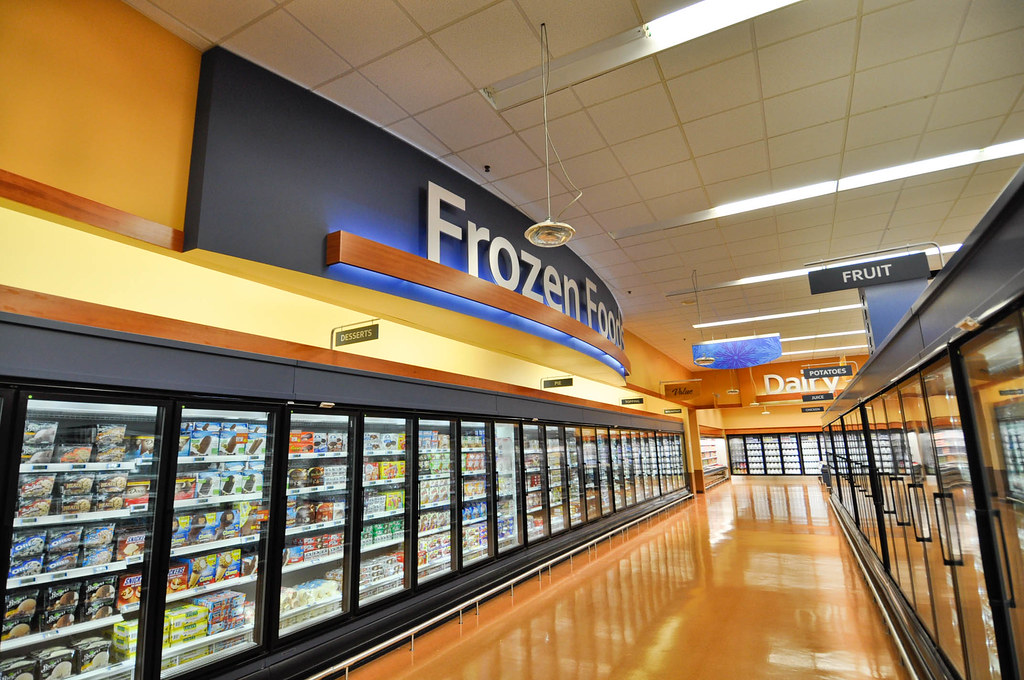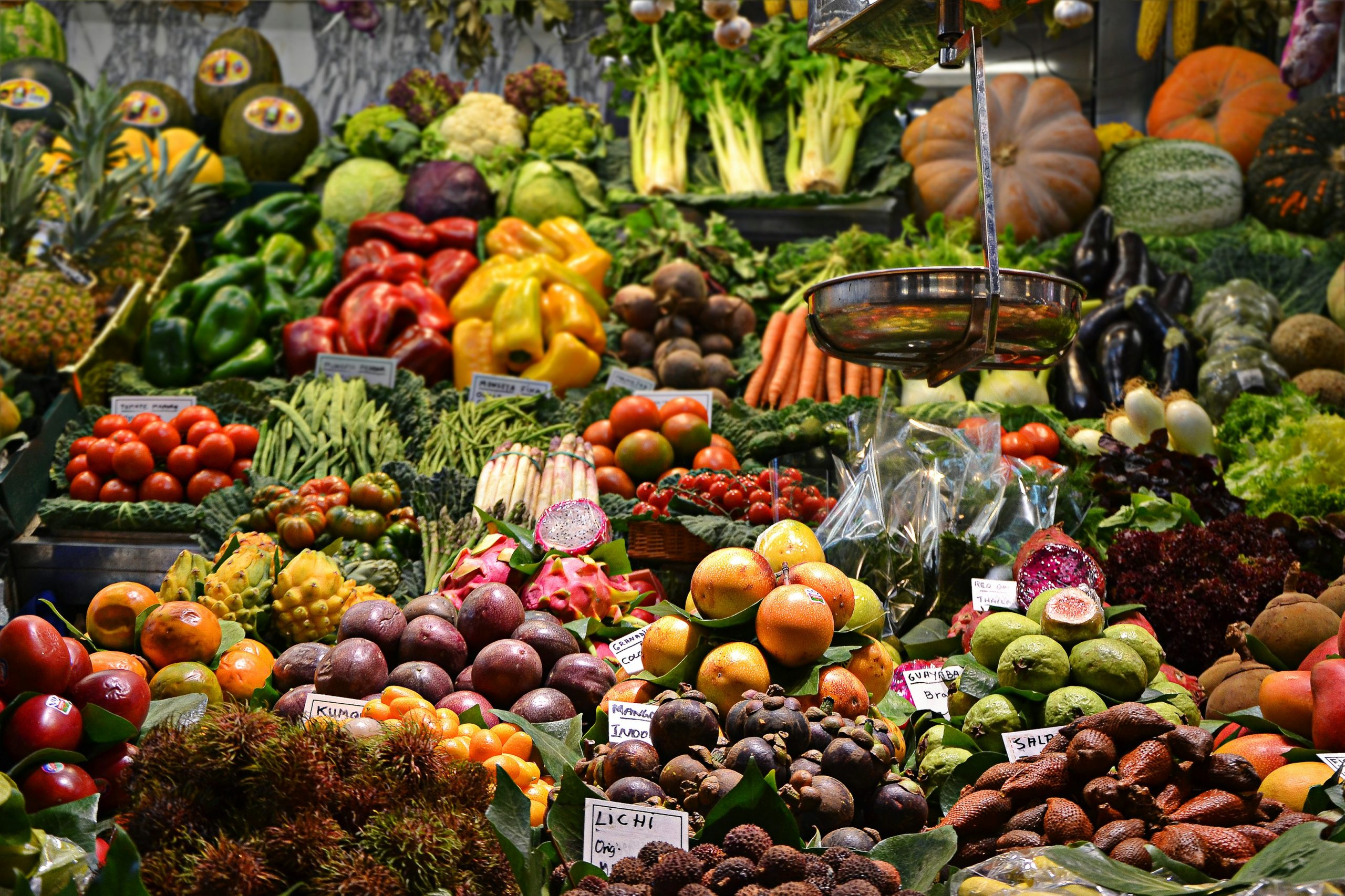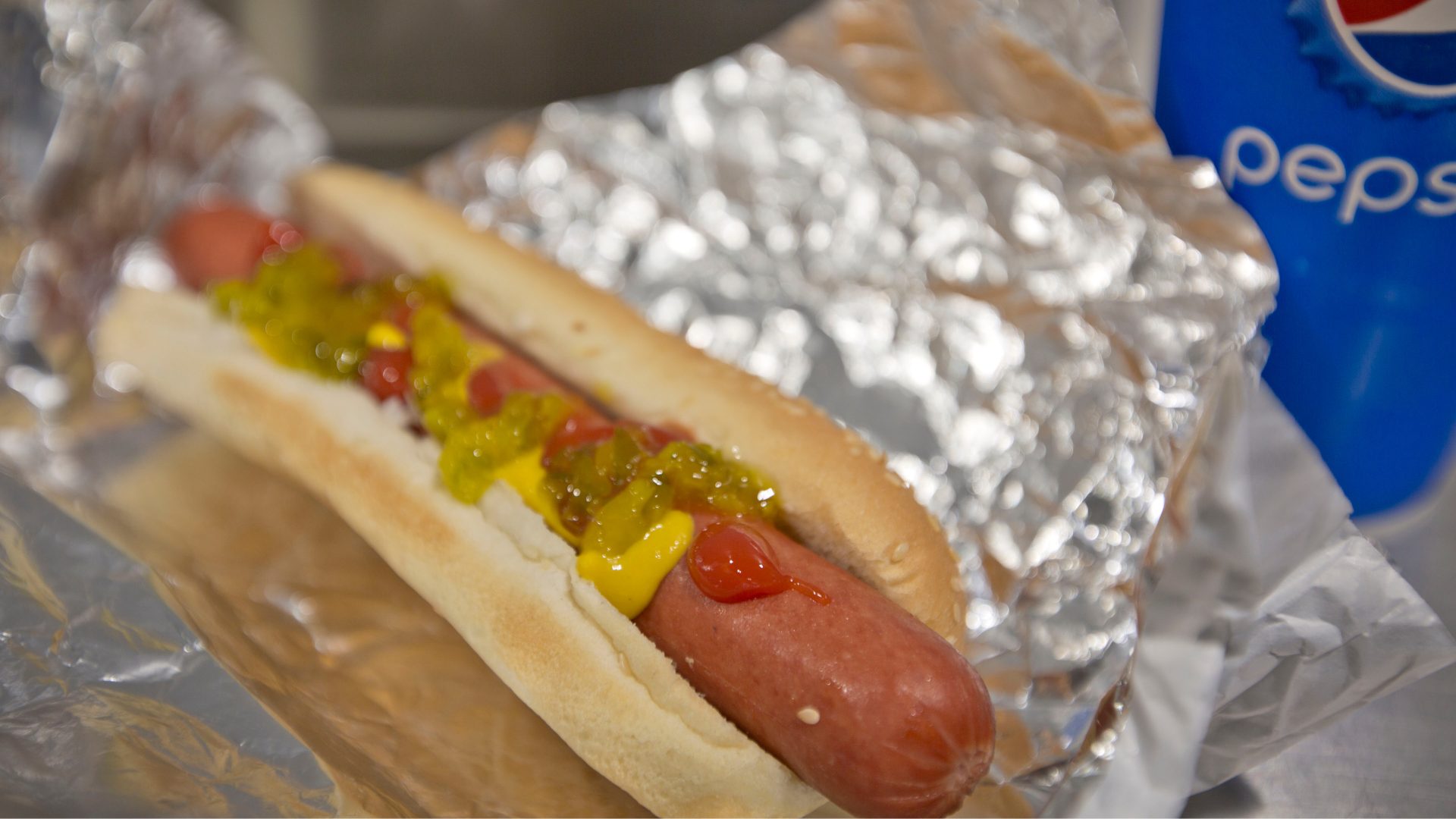This summer, retailers are focusing on private label strategies to address ongoing financial strains, and frozen food is no exception.
“Consumers are looking to trade down to cut back on costs, but they often don’t want to sacrifice the convenience factor that fast food offers,” Michael Della Penna, Chief Strategy Officer at InMarket, told FI. “Frozen meals offer an easy way and affordable way to limit spending without sacrificing the ability to have a hot meal in your hands within minutes.”

There’s also lower brand loyalty when it comes to the freezer aisle.
According to survey data presented at Frozen IQ 2024, 96% of frozen shoppers did not think a brand indicated quality and 95% of consumers said they didn’t prefer brand names.
“Private label and store brands know that consumer preferences are price-driven when it comes to frozen goods and they’re capitalizing on this,” Mitchell Madoff, Head of Retail Partnerships at Keychain told FI. “It’s also worth noting that Gen Z – an increasingly large part of the prime spending demographic – are less brand loyal than their predecessors.”
Processed Meats Lead the Pack
Frozen meat is a private-label hot spot.
Per Circana, processed meats saw significant sales lift across units and dollars in the 52-weeks ending June 16. Top performers by unit sales were bacon (+33.5%), breakfast sausage (+14.1%), and processed chicken (+13.0%), including nuggets and strips.
Among the unprocessed meats, turkey (+12.4%) was a sales leader. Operators are also expanding niche meat varieties including veal (+12.7%) and lamb (+227.2%).
Private label options are also rising in frozen seafood. Category sales were up 1.9% with finfish (+4.3%) leading variety growth.
Going All In on Meals
Frozen meals are also a leading target for private-label innovation. Top category performers by unit sales include dinners and entrees (+6.4%) and breakfast foods (+5.8%).
Frozen muffins saw the most sales growth in the breakfast category, with a whopping 46.9% increase. Meanwhile, handheld meals (+33.7%) were the strongest performers within dinners and entrees.
Other noteworthy frozen meal sales included single-serve side dishes (+14.9%) and two varieties of frozen pasta: tortellini/tortelloni (+48.4%) and gnocchi (+15.1%).
Along with price and convenience, another factor boosting demand for frozen meals is more people returning to work.
“According to the U.S. Bureau of Labor Statistics, people who telework spent 67.7% of their time doing so in May 2024, which has steadily declined from 74.3% in January of 2023,” Michelle Garcia, Client Strategy Director at Vericast, told FI. “This has increased the need for on-the-go breakfast options and convenient meals for dinners.”
Other Sweet (and Savory) Spots
Unit sales for select varieties of frozen fruit sales are thriving under store brands, including coconuts (+38.3%) and bananas (+19.7%).
In the frozen veggie space, plain potatoes (+15.6%), onion rings (15.6%) and onions (+6.5%) are enjoying significant lift.
Finally, frozen desserts and toppings were up 5.8% YOY with private-label cheesecakes (+20.6%) and puddings/mousse (+7.2%) experiencing noteworthy growth.
Additional Motivators Driving Innovation
Retailers are becoming savvier about responding to consumer behavior shifts such as offsetting inflation by eating more food at home and cutting back on food waste.
“The same holds true for retailers,” said Garcia. “Frozen foods help retailers provide affordable meals and because they are less perishable, they help avoid the shrink that often occurs with fresh items.”
As Della Penna notes, there’s also an opportunity for store brands to drive increased loyalty by providing specialty frozen meals to key targeted segments.
For example, Walmart’s ‘bettergoods’ line-up includes quality-focused messaging, plant-based offerings, and a wide assortment of gluten-free and dairy-free frozen foods.
“Leaning into this quality and health-focused messaging helps the brand build trust and consideration for its offerings, alongside its competitive pricing that’s essential for driving that purchase,” Della Penna concluded.
The Food Institute Podcast’s “Foodservice Gamechangers” Series
Get to know the men and women behind the scenes of foodservice distribution in a new, limited series from The Food Institute Podcast called “Foodservice Gamechangers.” Recently, Pat Mulhern, advisor to The Food Institute, sat down for brief conversations with seven of the most influential foodservice merchandising and distribution leaders. Highlighting their food career journeys and management styles, the conversations feature insightful thoughts on what may lie ahead for manufacturers, distributors, and operators in foodservice.









